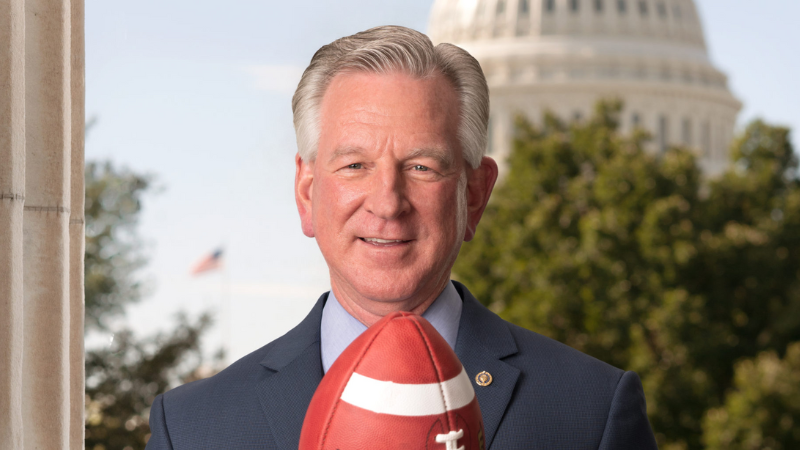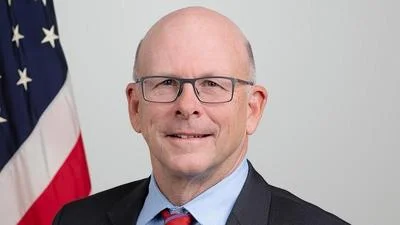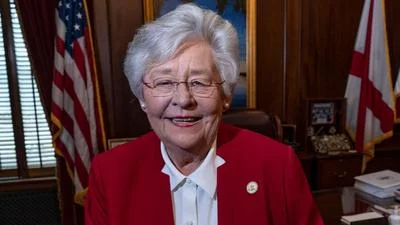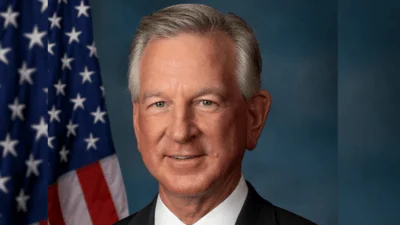Senator Tommy Tuberville | Senator Tommy Tuberville Official U.S. Senate headshot
Senator Tommy Tuberville | Senator Tommy Tuberville Official U.S. Senate headshot
WASHINGTON — U.S. Senator Tommy Tuberville (R-AL) led his first hearing as Ranking Member of the U.S. Agriculture, Nutrition, and Forestry (AG) Subcommittee on Rural Development and Energy. The hearing, titled “Rural Broadband: Connecting our Communities to the Digital Economy,” focused on ways to expand broadband access in rural communities in the 2023 Farm Bill. Discussions throughout the hearing revolved around streamlining the application and permitting process, service speeds, broadband deployment infrastructure, and prioritizing internet service access to rural communities.
Senator Tuberville opened the hearing with the following remarks:
“In today’s day and age, access to reliable internet service is not a want—it is a need. It’s vital. Rural communities cannot compete, much less survive, with urban areas unless they have broadband internet. If the pandemic taught us anything, it’s that Americans need reliable and fast internet to work, take online classes and complete homework, have virtual meetings through Zoom, and participate in telemedicine. Additionally, our farmers rely on internet access to operate their equipment and operations. The technology of farming is constantly changing, and our producers need resources to remain competitive. Modern farming utilizes precision agriculture technologies, tractors and combines with GPS systems, and irrigation equipment that can be managed remotely from smartphones and tablets. Without internet access, our farmers cannot farm, and our rural communities will get left behind. In Alabama, 55 out of the 67 counties, are considered rural. Out of the state’s total population, 43.6% live in rural areas.”
As Alabama’s voice on the AG Committee, Senator Tuberville is actively advocating for the state’s agricultural priorities—including rural broadband expansion—in Farm Bill hearings.
More excerpts from Senator Tuberville’s remarks can be found below, and the entire remarks can be viewed here at the 1:30:43 and 2:10:14 marks.
https://www.tuberville.senate.gov/wp-content/uploads/image-58.png
ON ALABAMA’S NEED FOR RELIABLE BROADBAND
TUBERVILLE: “Rural development programs aim to prioritize investments in the most rural and unserved areas across the country, which are often economically depressed. In Alabama, this region is called the Black Belt, which consists of 19 counties in the western part of the state. The Black Belt is the home to nine out of [the] ten most economically challenged counties in the state. These areas are in critical need of support and development. A vital step in developing our rural communities is ensuring access to reliable broadband service.”
TUBERVILLE: “Two key considerations need to be kept top of mind throughout our discussions today on broadband in the Farm Bill: Prioritizing unserved areas and considering feasible buildout speeds to provide reliable service. In their latest funding proposal, the USDA increased requirements for sufficient broadband access from speeds of 25/3 megabits per second to 100/20 megabits per second download and upload speeds. Yet, about 10% of Alabamians do not have access to download and upload speeds of 25/3. Furthermore, only 34% of my state has access to fiber-optic service which can supply 100/100 symmetrical speeds. How are we supposed to close the digital divide if we are leaving our rural communities in the dust? This subcommittee cannot focus solely on providing fast speeds when we continue to have areas with no service at all. These service gaps are what we should consider when allocating resources.”
TUBERVILLE: “Turning our attention to the unserved areas is the best way to develop rural communities. We must prioritize deployment to unserved and underserved areas. With this game plan, we ensure efficient use of taxpayer resources and don’t leave rural communities behind. I look forward to working with my colleagues to craft effective broadband policy that benefits all rural Americans.”
ON INCREASING BROADBAND SERVICE SPEEDS FOR RURAL AREAS
TUBERVILLE: “Mr. Johnson, in my state of Alabama, there’s 190,000 people that are considered unserved. [Some only] have service speeds that are 25/3 megabits per second. According to the USDA definition, [an] unserved area is considered one without available speeds of 100/20 when before it was considered 25/3. Given this change, how can we ensure areas with 25/3 or even less are going to have service?”
JOHNSON: “Senator Tuberville, in the state of Alabama, we are now focusing on a threshold of 100/20. You are absolutely correct. There are many people who do not have access to service of 25/3. If we look at the best available data today, a family of four is already demanding the bandwidth in excess of 100 meg-symmetrical service—if you look at some of the best data that is available today. In light of that, we’re way past arguing that 25/3 is an acceptable service standard for any level of service. It gets a little more dicey when we come up to the next step. Now 100/20 is the threshold for eligibility, but in the state of Alabama there is great preference shown to the expenditure of grant funds that will deliver at 100/100. Obviously, FTC is a complete supporter of the concept that if we go out, certainly, more than eight to ten years, optical fiber technology is likely to be the only service that will be able to meet the bandwidth demands that are currently projected. To be certain, the DOCSIS (Data Over Cable Service Interface Specification) standard of the cable industry will serve very well in the interim in many cases, as long as the networks are very sufficiently robust and well-maintained. But nonetheless, if you look at existing capacity demands and you go out beyond eight to ten years, you are forced to look at long-term solutions, which we firmly believe are best served by extending optical fiber as far as you possibly can, given the amount of funds available.”
FORDE: “First of all, what we’re seeing, as these speed thresholds have increased from 25/3 to 100/20, almost 100% of the applications we’re seeing are for areas between 25/3 and 100/20. Therefore, nearly 100% of the remaining addresses in our highly rural areas that have less than 25/3 still remain at that. We are truly not accomplishing the fact of trying to get to those unserved addresses as these speed thresholds have increased. Certainly, I would say that all of our technologies that we deploy whether its our fiber system, our hybrid fiber coax system, or our fixed wireless, they are all future-proof and we have no issues with delivering higher speeds on any of those technologies. We do not find that any consumer cares how they got their broadband service as long as it is fast and reliable. And third, no consumers are using 100/100 symmetrical speeds. It is a ‘download world’. We want to provide the consumers with what they want and need today and tomorrow and should not have to be providing 100-megabit upload speeds that nobody is using. Even during Covid, we saw very little increase in upload speeds. It’s still fourteen to seventeen times higher in download speeds. It’s a download world, not an upload world. We shouldn’t be building those networks for folks that aren’t using them.”
ON SUCCESSFUL BROADBAND STRATEGIES
TUBERVILLE: “Mr. Forde, you talked about how fiber deployment [only] works in certain terrains – especially your area of the country. What broadband technologies have you seen deployed in these areas that actually work? What’s the best availability for you?”
FORDE: “We like to use the best technology for our customer and your constituents, right? When you’re talking about serving the last, hard-to-reach areas, you’re talking about the Black Hills of South Dakota, you’re talking about the Iron Range, and Iron Range in northern Minnesota, right? Some of these areas have very tough geography. You could be dealing with as much as $100,000 per mile to drill through rock. You could be dealing with a eight or nine mile-long driveway. It’s simply irresponsible to try to run fiber through some of these locations when a fast, reliable, fixed wireless connection can easily do the job and take care of the consumer. The other thing I’ll note, especially this winter, in the northern part of the country, we dealt with pretty much eight months of frozen ground. We were able to deploy fixed wireless technology to serve folks who needed it in blizzards. It would take years and [would be] uneconomical to run fiber through all those areas.”
TUBERVILLE: “Mr. Johnson, you got different parts in Alabama.”
JOHNSON: “Yes sir, and I would respectfully take issue with some of my colleague’s assertions there, but I’ll try to keep it very fact-based. Approximately 20% of my consumer base now takes gigabit service. I am also routinely required to certify, frequently, to a number of employers in the Chattanooga, Tennessee area, that their employees who are working from home, not voluntarily, but as a requirement of their jobs, are able to receive both download and upload speeds at or greater than 100 megabits symmetrical service. So our experience with our user profiles is entirely different from his in that regard. To that end, I will tell you that consumers today will become very concerned with both their download and upload speeds when they’re demand requirements exceed them. Now granted, some of them they are not, but when those download speeds are no longer sufficient, they will care very much about them.”
TUBERVILLE: “Okay, thank you.”
FORDE: “Just to clarify, we would stand ready to provide those download and upload speeds whenever our customers need them.”
TUBERVILLE: “Thank you.”
ON PRIORITIZING RURAL AREAS
TUBERVILLE: “Mr. Forde and Mr. Johnson, why is it so important to keep the required percentage of unserved locations within an awarded area as high as possible, and not lowered to 50% as the most recent ReConnect round of funding does, to successfully deploy broadband to the most rural, still unserved areas?”
JOHNSON: “There are reasonable arguments that can be made on both ends of that spectrum where that should be. But the reality of it is, we are talking long term solutions and limited dollars. The lower that threshold, commonly somewhere between 80%, 85%, 90%, historically. The lower that threshold, I can assure you the higher probability that scare taxpayer dollars will be used to improve existing networks, at the expense of those that have nothing, or completely inadequate service.”
FORDE: “Absolutely. We have to focus on those truly unserved areas. The percentages have to be 90% or higher for all of these programs to ensure that those people with nothing get served first.”
READ MORE:
Tuberville Op-Ed in 1819 News: Count on me to be a Voice for Rural America
Tuberville Pushes for Improved Commodities and Farm Safety Nets in AG Subcommittee Hearing
Tuberville Calls for Increased Support for Alabama’s Farmers During Senate Ag Hearing
Tuberville Stands Up for Alabama’s Foresters During Senate Ag Hearing
Tuberville Gets the Gavel for Key Agriculture Subcommittee
Tuberville Continues Advocating for Alabama’s Ag Interests in Farm Bill Hearing
Tuberville Advocates for Alabama’s Ag Priorities in First Farm Bill Hearing of 2023
Tuberville, Colleagues Urge Biden USTR Nominee to Support American Farmers
Tuberville Supports Rural Broadband Deployment in New Bill Protecting Grant Funding
Senator Tommy Tuberville represents Alabama in the United States Senate and is a member of the Senate Armed Services, Agriculture, Veterans’ Affairs, and HELP Committees.
Original source can be found here.






 Alerts Sign-up
Alerts Sign-up